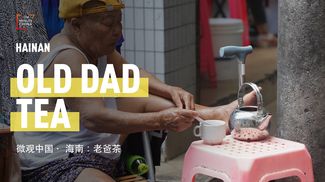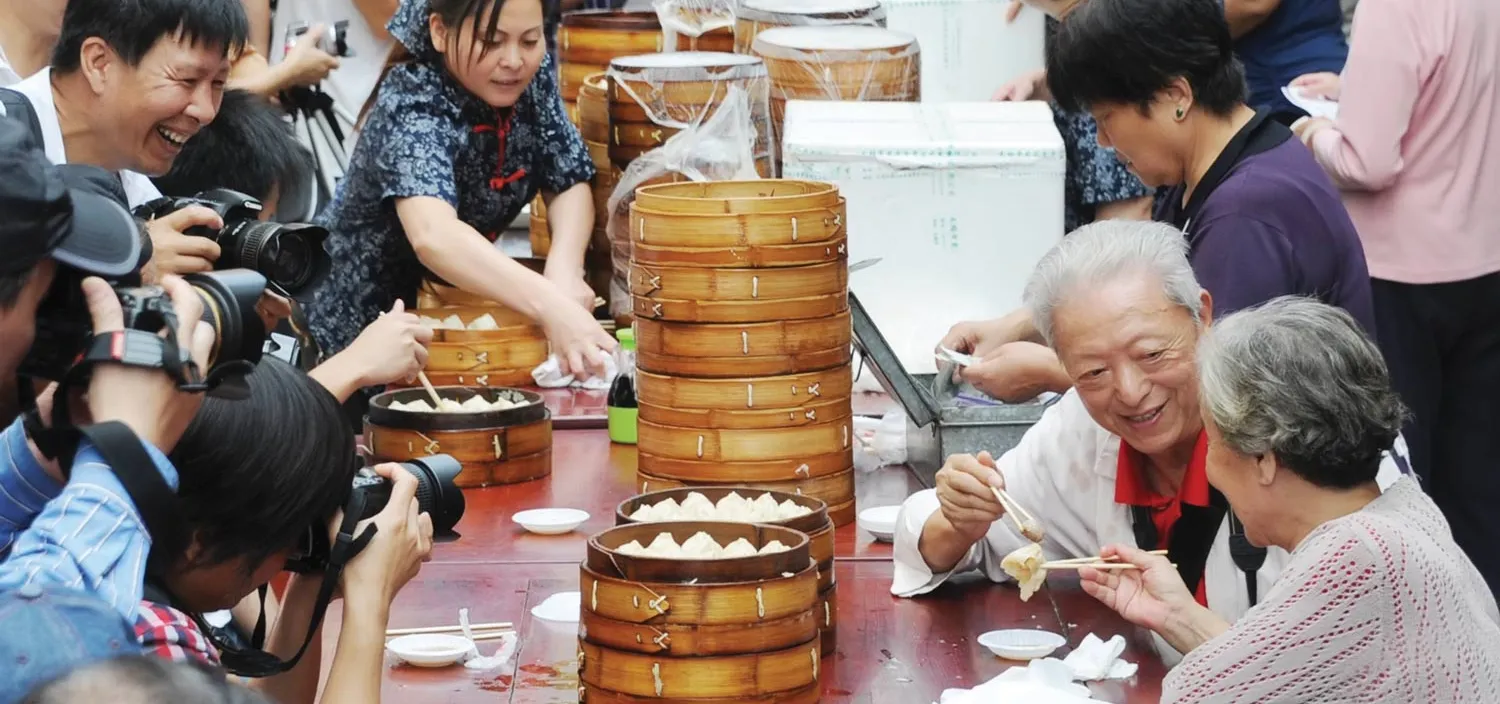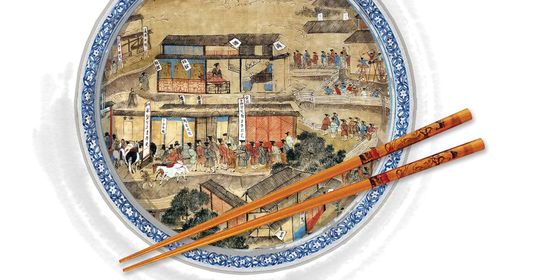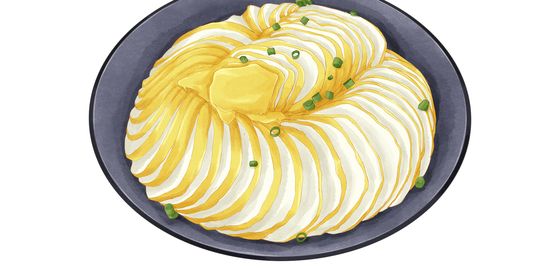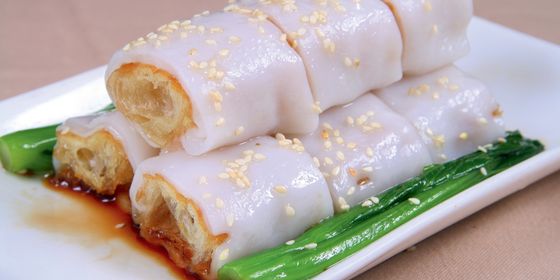In search of the perfect xiaolongbao, Sun Jiahui finds several regions claiming the title
Earlier this year, Time Out London landed itself in the soup for misrepresenting a beloved Chinese snack—xiaolongbao (小笼包, “small steam-basket buns”), characterized by their translucent skin and piping-hot juice, surrounding a rich filling of meat or seafood.
Time Out’s video—classily subtitled “Love popping spots AND eating dumplings?”—was intended to promote a new dim sum restaurant. Instead, it showed diners viciously poking holes in the buns’ delicate skin and letting its delicious soup seep out, along with the tears of Chinese food-lovers around the world.
After thousands of angry tweets, open letters from foodies (“[it’s] the equivalent of smearing jam all over your plate/dining table,” wrote one, “and eating your toast plain”), and even the scorn of the Global Times’ Chinese version, the magazine was forced to issue an apology for its scandalous depiction of the “super dribbly…exploding dumplings,” adding, “We’d like to invite the knowledgeable food-lovers of China and Asia to tell us what traditional delicacies we Londoners should try, and how to eat them properly.”
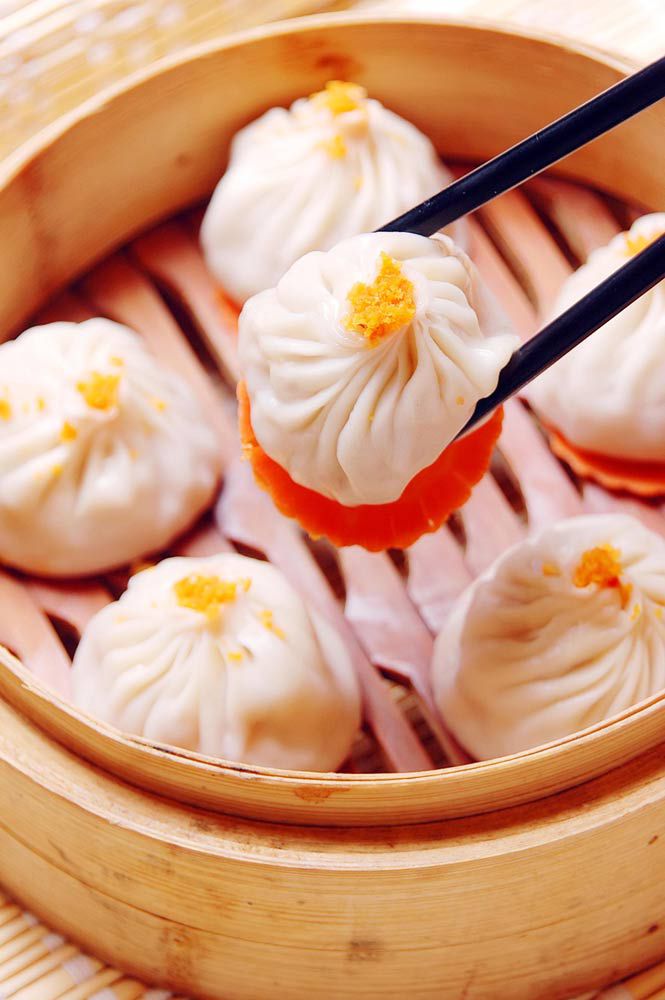
Xiaolongbao (VCG)
They could have just asked a Chinese teacher. The proper way of eating xiaolongbao has long been communicated by short rhyme: “Open a window [in the skin], slurp the soup, swallow the bao, and your mouth is full of flavor” (先开窗,后喝汤,一口吞,满口香)—essentially, the opposite of Time Out’s method. A perfectly made xiaolongbao is honored with another Chinese saying, “The skin doesn’t break when it’s picked up, the bottom doesn’t fall out when it’s flipped; suck out a mouthful of gravy, the taste is savory but not too rich.”
Achieving this standard of perfection is no mean feat, though the steps themselves are fairly simple: Pork skin is sliced and boiled in water until it forms a thick broth, which is then cooled until it congeals into jelly. The jelly is added to the filling, so that when the buns are steamed, it will melt back into soup.
There are numerous online training courses promising to teach this process in two to three days. It’s rumored, however, that xiaolongbao chefs at the Michelin-starred Din Tai Fung, an international chain of bao restaurants founded in Taiwan, undergo a six-month training period. Yang Jihua, the second-generation owner of the chain, told Xinhua News back in 2012 that rigorous standards are the secret to the company’s worldwide acclaim: “Fillings are mixed in a central kitchen kept at 18 degrees [Celsius] for pork or 16 degrees for shrimp.”
The size and weight of the ingredients are also controlled: The filling for each bao must weigh 16 grams, the skin 5 grams. The final product should have 18 creases at the top, weigh 21 grams each, and undergo four minutes in the steaming basket before serving. Yang told Xinhua he gets calls from entrepreneurs wanting to franchise his restaurant every day, but rejects them all, because “to create a business that will last 100 years, one has to go slow.”
But although Din Tai Fung has been a favorite pick of New York Times food critics since 1993 (when it was the only Asian restaurant on their lists), the brand’s performance on the Chinese mainland is average at best. For most, xiaolongbao is primarily a breakfast food and street snack as opposed to gourmet sit-down fare, and several cities have their own variation, though they don’t all go by the same name.
This has also bred intense competition: The shortlist of those claiming to make China’s best or most authentic xiaolongbao include Shanghai—arguably the best known—Hangzhou, Wuxi, Nanjing, Suzhou, and Changzhou on the Yangtze River Delta, as well as Wuhu and Huizhou in Anhui province and Kaifeng, in Henan.
The town of Nanxiang (南翔), now part of Shanghai’s Jiading district, is one place currently winning this race: “Nanxiang Xiaolong,” which claims to date back to 1871, is a branded trademark whose buns are sold in the frozen aisles of supermarkets all around the country. A restaurant called Nanxiang Xiaolong Mantou, near the City God Temple in Shanghai, has supposedly had locals and tourists lining up for bao almost every morning for over a century.
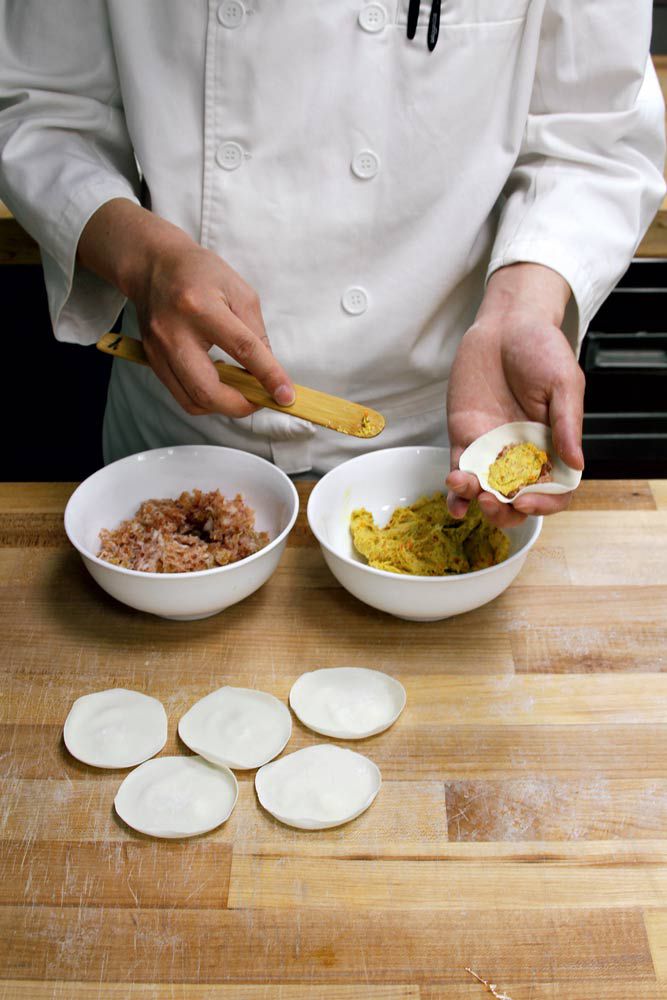
A chef prepares a simple xiaolongbao recipe (TWOC)
Nanxiang Xiaolong’s recipe was passed down exclusively from master to apprentice. Li Jiangang, its sixth-generation inheritor, has been making bao over 40 years. In 2000, Li decided to standardize the method of preparation: wrappers 1.5-millimeter thick, weighing 8 grams; filling of 16 grams in each bao; and the cooked bao should have a diameter of 2.5 centimeters and 18 creases at the top. These guidelines were adopted into China’s list of National Intangible Cultural Heritage in 2014.
Other cities, however, continue to put up a fight. Located on China’s central plains, Kaifeng has little geographic or cultural similarity to the decadent bao heartland of the Yangtze Delta. But compared to the upstart, immigrant-built Shanghai, it has ancient history on its side. Kaifeng’s soup-filled guantangbao (灌汤包) is essentially an enlarged version of the Nanxiang and Din Tai Fung variations and claims to be the ancestor to xiaolongbao; it traces its origin to the Northern Song dynasty (960 – 1127), when Kaifeng, a Yellow River entrepôt, was named the imperial capital. The size of an adult’s fist, guantangbao is characterized by rich, thick soup and soft skin folded to resemble a chrysanthemum—a flat shape and deep, swirly creases.
When the Song were driven south by the Jurchen invaders, eventually setting up a new capital in Hangzhou, the soup bao was allegedly introduced to the Jiangnan (“River South”) region as well. Today, Hangzhou puts up a good showing in the xiaolongbao power rankings, emphasizing that its bao are distinguished by their crab-roe filling and creamy texture, which is caused by the batter being mixed with boiling water.
It’s also one of the likelier varieties you’ll encounter outside the Yangtze region, due to the size of the diaspora from the counties surrounding Hangzhou. Wuxi retorts that its xiaolongbao are richer, bulkier, with a delicate hint of sugar in the filling and a chewy texture. It’s often spoken of in pair with the similar, but sugarless, Changzhou xiaolongbao, which advertises itself with another local saying, “It’s better to wait for the bao than let the bao wait for you”—that is, the diner might have to queue up for the delicious bao, but the delicacy certainly never has to wait for any diners.

Street vendors in Kaifeng and other cities sometimes sell guantangbao with a straw for the soup (VCG)
What it is about these tiny soup bombs that make emotions run to boiling point? Folk wisdom says it’s due to the name, since the character 笼 (“steaming basket”) is a homonym for 龙 (“dragon”), the symbol of Chinese civilization. There’s also the theory that cities in the South, in particular, scramble to claim xiaolongbao as their own because it epitomizes the values of Jiangnan cuisine—an outwardly delicate appearance, concealing a riot of complex and decadent flavors. It’s also associated with other Jiangnan cultural elements like tea-drinking or flower-watching, as it’s frequently served as a snack during both activities.
Its popularity is such that the name, xiaolongbao, has become something like a brand. As the more pedantic Jiangnan locals will tell you, its traditional name is simply tangbao (soup bao) or xiaolong mantou, mantou (馒头) being what northerners call steamed buns with no filling. Purists in Henan also bemoan the gradual replacement of the name guantangbao with “Kaifeng xiaolongbao,” which they feel is pandering to the rest of the country. There are even overseas Chinese restaurateurs who have fabricated a connection between these xiaolongbao and Bruce Lee, whose Chinese name is Li Xiaolong (李小龙), to sell crowd-pleasing “Bruce Lee dumplings” and “kung fu dumpling specials.”
While it’s not easy to decide which area has the best xiaolongbao, bizarrely, the title “China’s No. 1 Bao” (中华第一包) goes to none of them. It is claimed by Tianjin’s Goubuli (狗不理, literally, “Dogs Ignore”) restaurant, whose bao are also on the National Intangible Heritage list (the dish has nothing to do with dogs, but refers to the founder of the restaurant, “Puppy”)—now that’s a scandal.
Steam of Rivals is a story from our issue, “Down to Earth.” To read the entire issue, become a subscriber and receive the full magazine. Alternatively, you can purchase the digital version from the App Store.




